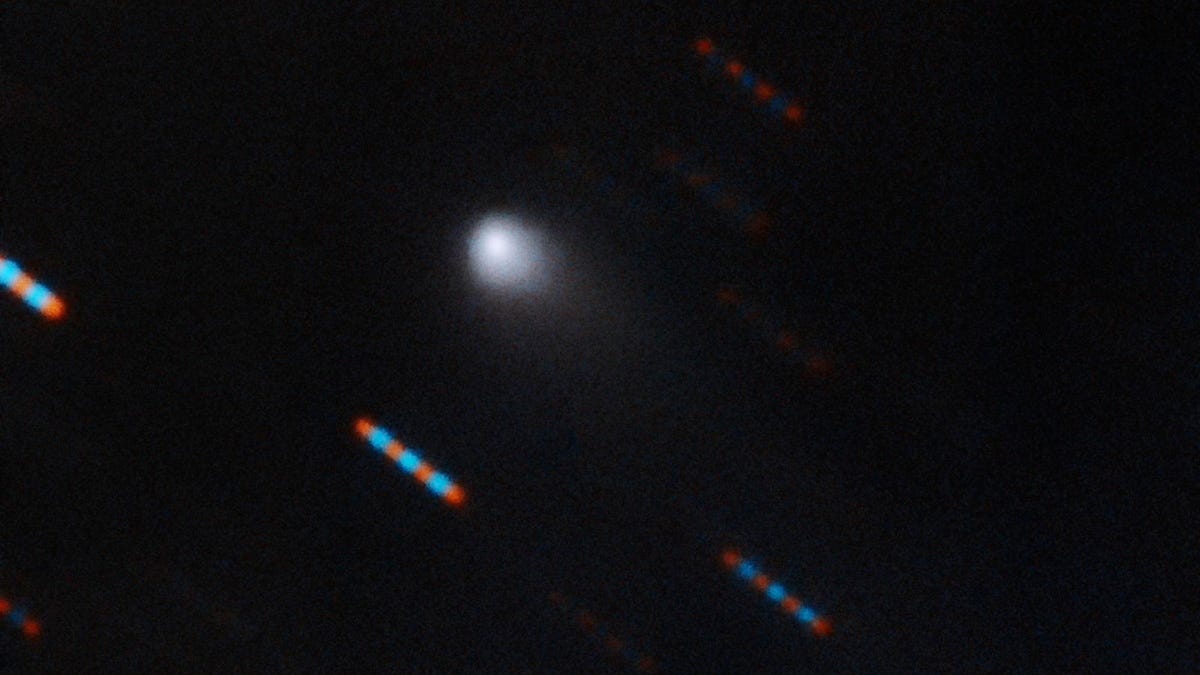Our best look at likely interstellar comet Borisov so far
It's coming for a swing past our sun because it isn't bound to one. Scientists have taken a stunning multicolor image of the visitor on approach.

Here's a two-color composite image of C/2019 Q4, which could be the first interstellar comet ever identified. Blue and red dashes are images of background stars that appear to streak due to the motion of the comet.
Astronomers have spotted what's believed to be just the second known interstellar object ever discovered. And now a telescope on Hawaii's Mauna Kea has taken the clearest color image of the vagabonding comet so far.
Comet Borisov, or C/2019 Q4, as it's more formally known, likely came from somewhere beyond our solar system and is currently set to make its closest pass by the sun in December before heading back out to deep space.
The comet was originally spotted by Ukrainian amateur astronomer Gennady Borisov on Aug. 30 from Crimea, and over the following weeks observatories around the world have swung into action to try to make follow-up observations. One was the Gemini Observatory on Mauna Kea, which managed to capture the above image on Monday evening.
C/2019 Q4 is the white object in the center with the fuzzy tail, or coma, a result of outgassing that defines a comet.
According to NASA, the comet is currently 260 million miles (420 million kilometers) from the sun and will come as close as about 190 million miles (300 million kilometers) on Dec. 8. This will keep it beyond the orbit of Mars as it passes through the top to bottom of our solar system's plane.
This illustration depicts comet C/2019 Q4's trajectory.
"The comet's current velocity is high, about 93,000 mph (150,000 kph), which is well above the typical velocities of objects orbiting the sun at that distance," said Davide Farnocchia, of NASA's Center for Near-Earth Object Studies. "The high velocity indicates not only that the object likely originated from outside our solar system, but also that it will leave and head back to interstellar space."
The odds are good we'll see this very foreign comet in far greater detail as it continues to come closer over the next few months.
"The object will peak in brightness in mid-December and continue to be observable with moderate-size telescopes until April 2020," said Farnocchia. "After that, it will only be observable with larger professional telescopes through October 2020."

